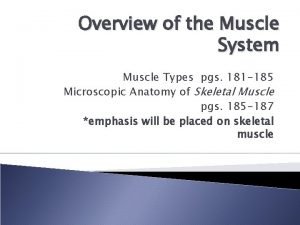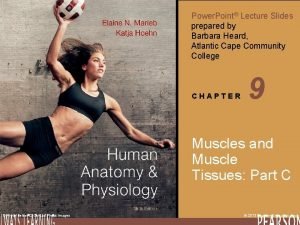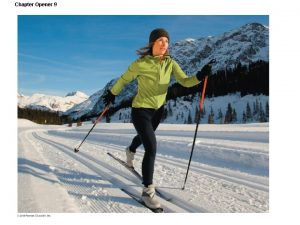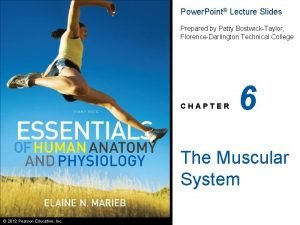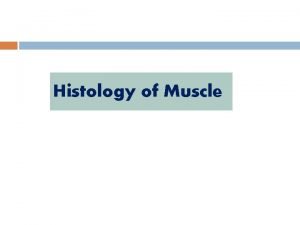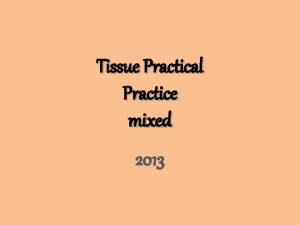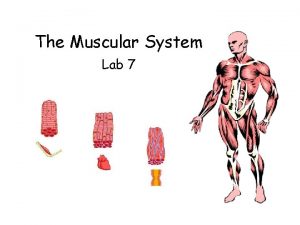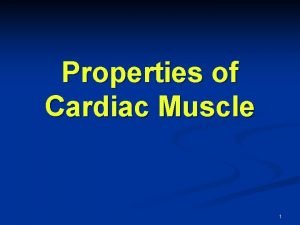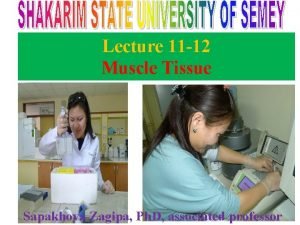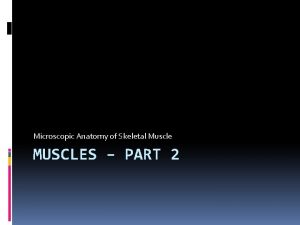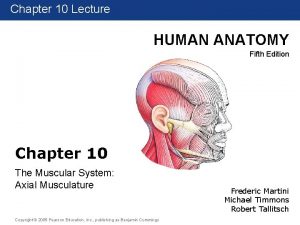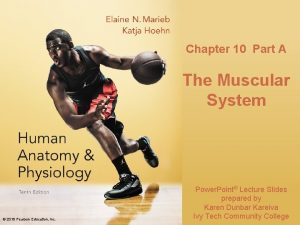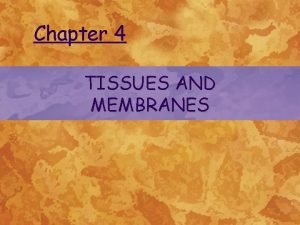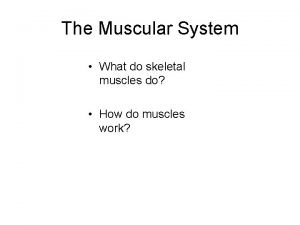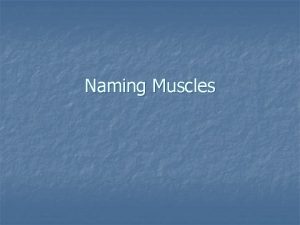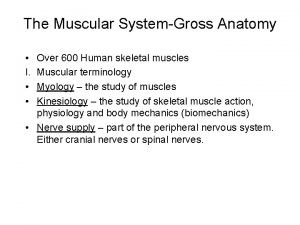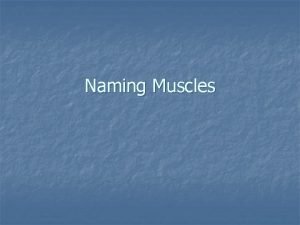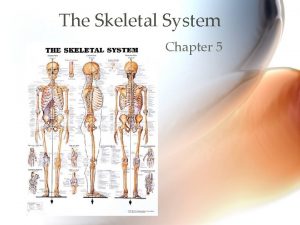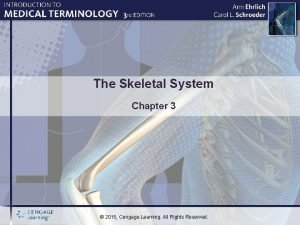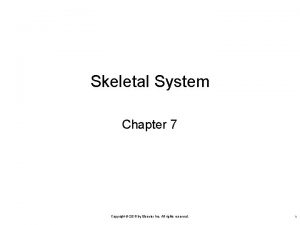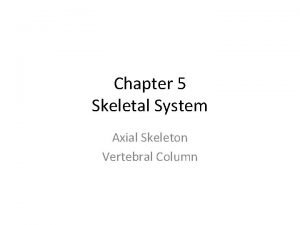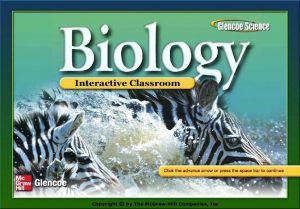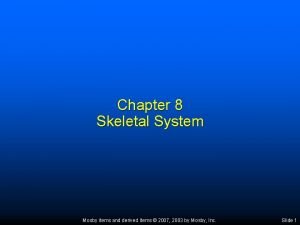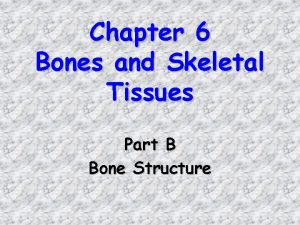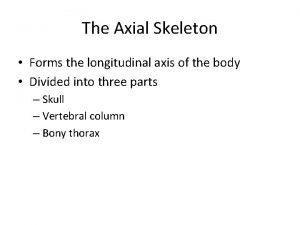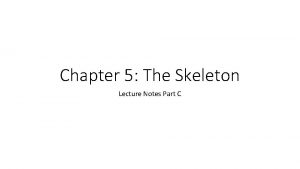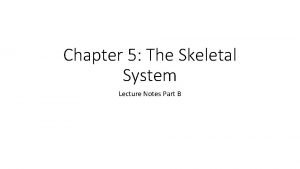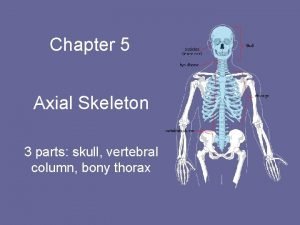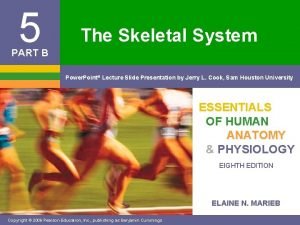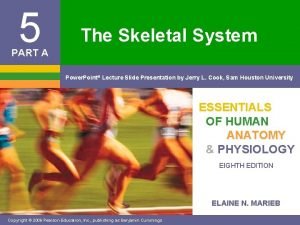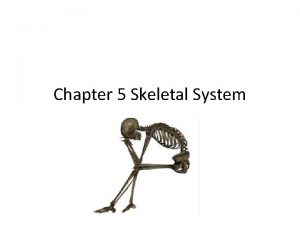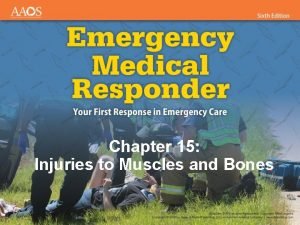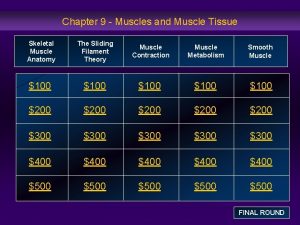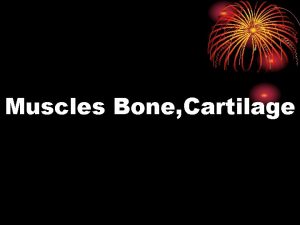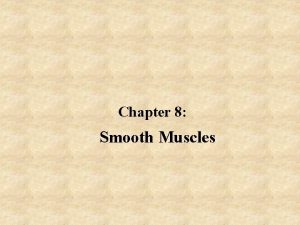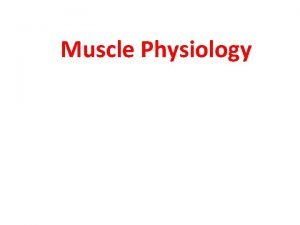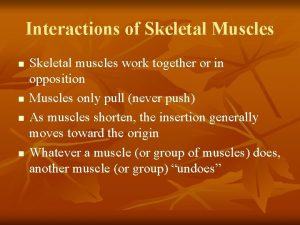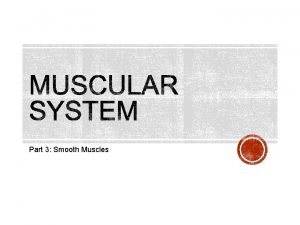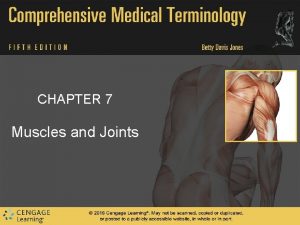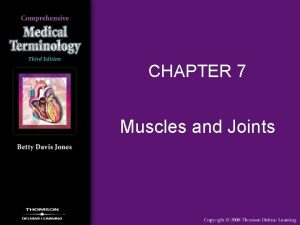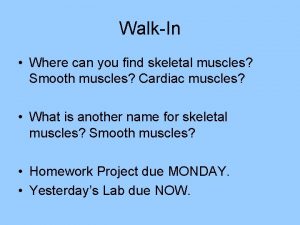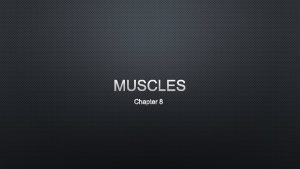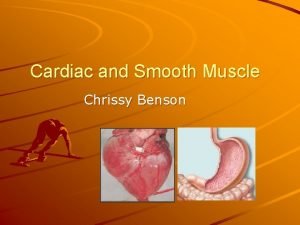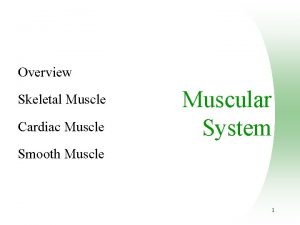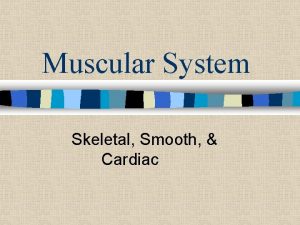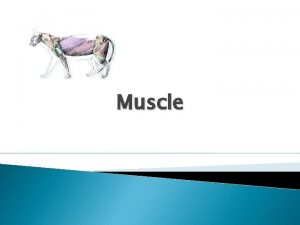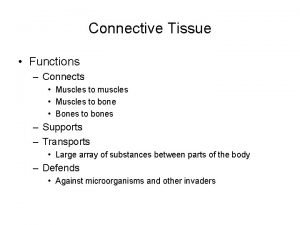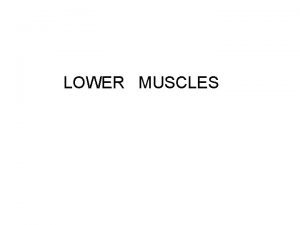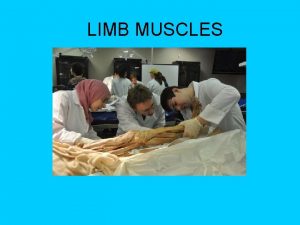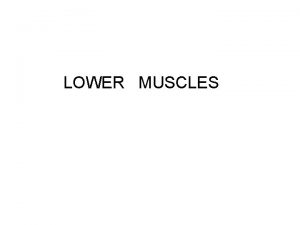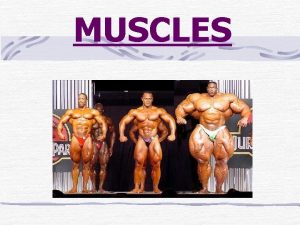Muscles Skeletal Cardiac Smooth Seminar No 12 Chapter











































![Other NO releasing compounds Na 2[Fe(CN)5 NO] sodium nitroprusside (natrii nitroprussias) sodium pentacyanonitrosylferrate(III) extremely Other NO releasing compounds Na 2[Fe(CN)5 NO] sodium nitroprusside (natrii nitroprussias) sodium pentacyanonitrosylferrate(III) extremely](https://slidetodoc.com/presentation_image/94b497716291183f1e2a63f2e0f0e8a3/image-44.jpg)




- Slides: 48

Muscles Skeletal ~ Cardiac ~ Smooth Seminar No. 12 - Chapter 19 1

Thick filament is the myosin aggregate of cca 350 monomers 2

Myosin monomer • two heavy chains (they make a double helix) • four light chains (MLC – myosin light chains) • N-terminal of a heavy chain forms a globular head with ATPase activity (ATP + H 2 O ADP + Pi) • treatment of myosin with proteases affords stable fragments (for research purposes). 3

Thin filament – Actin • globular monomer (G-actin) makes a double helix (F-actin) • F-actin has other accessory proteins attached: • tropomyosin (double helix) • troponin C – binds calcium ions • troponin I – inhibits interaction actin-myosin • troponin T – binds to tropomyosin and other troponins 4

Q. Which signal molecule triggers the contraction of skeletal muscles? 5

A. acetylcholine (see Harper, Chapter 64) 6

Events on neuromuscular junctions • junction consists from nerve terminal separated from postsynaptic region by the synaptic cleft • acetylcholine is released from synaptic vesicles and binds to nicotinic receptors in muscle cell membrane depolarization of membrane and T-tubules • T-tubules are connected with sarcoplastic reticulum (SR) Ca 2+ ions are released from SR (where associated with calsequestrin protein) • calcium ions then bind to troponin C contraction 7

8

Q. What is the Ca 2+ concentration? a) in ICF - sarcoplasm during resting state b) in ICF - sarcoplasm during contraction c) in ECF - blood plasma 9

The concentration of calcium ions in body fluids mol/l Sarcoplasm / resting 10 -8 0. 01 Sarcoplasm / contraction 10 -5 10 2. 5 10 -3 2 500* Fluid / Condition Blood plasma * 2. 5 mmol/l 10

Skeletal muscle: relaxation/contraction cycle • Relaxation (scheme on p. 109) • troponin I inhibits actin-myosin interaction • ATP molecule (attached to myosin head) has been hydrolyzed chemical energy is conserved in myosin head conformation • concentration of calcium ions in sarcoplasm is extremely low (10 -8 M) 11

Skeletal muscle: relaxation/contraction cycle • after release of Ca 2+ from SR myosin-ADP-Pi complex binds to actin • ADP and Pi are liberated from myosin head, actin filament is pulled by cca 10 nm towards to sarcomere centre chemical energy is transformed to mechanical work • new ATP molecule binds to myosin head dissociation of actin-myosin complex • the liberation of Ca 2+ ions from troponin C and hydrolysis of ATP leads to relaxation 12

Q. What is the effect of botulinum toxin on the neuromuscular junction? 13

A. (see scheme on p. 135) • Botulinum toxin is produced by bacterium Clostridium botulinum. The toxin is a two-chain polypeptide with a heavy chain joined by a disulphide bond to a light chain. • The light chain is a protease that attacks one of the fusion proteins at a neuromuscular junction, preventing vesicles from anchoring to the membrane to release acetylcholine. By inhibiting acetylcholine release, the toxin interferes with nerve impulses and causes paralysis of muscles (botulism). • no action potential is generated permanent relaxation 14

Medical uses of botulinum toxin • Currently, Botox (= trade name) is finding enormous potential in several therapeutic areas including the treatment of migraine headaches, cervical dystonia (a neuromuscular disorder involving the head and neck), blepharospasm (involuntary contraction of the eye muscles), and severe primary axillary hyperhidrosis (excessive sweating). • Other uses of botulinum toxin include urinary incontinence, anal fissure, spastic disorders associated with injury or disease of the central nervous system including trauma, stroke, multiple sclerosis, or cerebral palsy and focal dystonias affecting the limbs, face, jaw etc. 15

Botulinum toxin injections are applied in cosmetics to vanish facial wrinklers 16

Q. What are ATP sources for maximal work: a) during the first 10 sec b) after 1 min c) after 10 min 17

ATP sources for muscle contraction see page 95 • During the first 10 sec – ATP itself and creatine phosphate present in muscle cell • After 1 min – mainly anaerobic glycolysis glucose 2 lactate + 2 ATP • After 10 min – aerobic oxidation of glc + FA glucose 2 pyruvate 2 acetyl-Co. A 38 ATP stearic acid 9 acetyl-Co. A 146 ATP 18

Skeletal muscles contain red (slow) and white (fast) fibers Feature Red fibers White fibers Colour red white Myoglobin yes no Mitochondria many few Contraction rate slow fast prolonged short ? ? Duration ATP source 19

Skeletal muscles contain red (slow) and white (fast) fibers Feature Red fibers White fibers Colour red white Myoglobin yes no Mitochondria many few Contraction rate slow fast prolonged short FA, Glc/aerob Glc/anaerob Duration ATP source 20

Maximal intesity of muscle work (scheme on p. 94) • anaerobic phase • 30 sec – 2 min • working muscles use glucose metabolized to lactate • lactate goes to liver substrate of gluconeogenesis • small portion of lactate becomes metabolic fuel for resting muscles and myocard 21

Prolonged muscle work/exercise (scheme, p. 94) • working muscles are adapted to aerobic metabolism of glucose and FA • resting muscles utilize FA and KB • glycerol from lipolysis is the substrate for liver gluconeogenesis 22

Q. What is the yield of ATP during: a) aerobic glycolysis b) anaerobic glycolysis 23

A. Type of glycolysis Aerobic Anaerobic ATP / Glc 36 – 38* 2 * Depends on the type of transport of cytosolic NADH to mitochondria. 24

Q. Explain the cause of rigor mortis. 25

A. Rigor mortis is a recognizable sign of death (L. mors, mortis, f. ) that is caused by a chemical change in the muscles, causing the limbs of the corpse to become stiff (L. rigor, oris, m. ) and difficult to move or manipulate. Assuming mild temperatures, rigor usually sets in about 3 -4 hours after clinical death, with full rigor being in effect at about 12 hours. ATP supply from metabolic reactions is exhausted, the muscles remain contracted for ever. 26

Cardiac muscles - Contraction • three different sources of Ca 2+: ECF, SR, mitochondria • extracellular calcium enters muscle cells via VOC (voltage operated channels) troponin C contraction • Ca 2+ bind to: calmodulin autoregul. - relaxation 27

Cardiac muscles - Relaxation • Ca 2+ ions are liberated from troponin C and removed from sarcoplasm • there are four systems how to vanish Ca 2+ in sarcoplasm 1. Ca 2+-ATPase in SR 2. Ca 2+-ATPase in sarcolemma 3. Na+/Ca 2+-exchanger (antiport) in sarcolemma 4. Ca 2+ re-entry to mitochondria 28

Autoregulation in cardiac muscle • see scheme on page 110 • intracellular calcium is in the complex with protein calmodulin: Ca 2+-CM • Ca 2+-CM stimulates all Ca 2+-pumps which decrease [Ca 2+] in sarcoplasm • the increase of intracellular [Ca 2+] triggers contraction but, at the same time, stimulates relaxation processes 29

Modulatory effect of c. AMP on cardiac muscles • c. AMP is the second messenger produced after the activation of Gs-protein-linked-receptors (β-adrenergic receptors) • such receptors are activated by catecholamines – nor/adrenaline • c. AMP activates protein kinase A • protein kinase A catalyzes the phosphorylation of: calciductin of VOC influx of Ca 2+ contraction Ca 2+-ATPase in sarcolemma eflux of Ca 2+ relaxation Ca 2+-ATPase in SR eflux of Ca 2+ relaxation 30

c. AMP as the second messenger (compare p. 136) Feature α 1 Adrenergic Receptors α 2 β 1 β 2 Hormone adrenaline G-protein Gp Gi Gs Gs DG, IP 3 c. AMP smooth muscle brain myocard smooth m. 2 nd messenger Occurence* * Example of occurence 31

Q. Which parameters are used as the best markers of myocardial infarction (MI)? 32

Markers of MI (updated table from p. 25) Marker Onset (hours) Maximum (hours) CK-MB 3 -6 16 - 32 up 30 c. Tn. T 3 -4 12 - 18 up 300 0. 5 - 3 6 - 12 up 10 Myoglobin* Multiple of elevation * The most sensitive indicator, but not specific for myocard. 33

Metabolic background of MI • ischemia (lack of oxygen in tissues) leads to anaerobic metabolism Glc is converted to lactate • lactate accumulates in ICF and alters intracellular environment prolonged acidosis causes irreversible cell damage (necrosis) • permeability of cell membrane increases cytoplasmatic/mitochondrial/contractile proteins are released into ECF • the best markers of MI are: myoglobin, CK-MB, cardial troponins (T or I) – a triple combination is recommended • LD isoforms are no longer used 34

Creatine kinase (CK) – see p. 23 • Dimer, two different chains (M – muscle, B – brain) • Three isoenzymes: MM (muscle), MB (heart), BB (brain) • Major isoenzyme in blood is MM (95 %) • MB form in blood: 0 – 6 % • BB in blood: traces (BB cannot pass across blood-brain barrier) • MB isoenzyme is a marker of myocardial infarction 35

Smooth muscles - Contraction • source of Ca 2+: ECF (VOC, ROC), SR • there is no troponine C, but two other regulatory proteins binding calcium – calmodulin + caldesmon • calcium-calmodulin complex (Ca 2+-CM) activates MLCK (myosin light chain kinase) • activated MLCK catalyzes the phosphorylation of myosin • phosphorylated myosin is capable to make complex with actin contraction 36

Smooth muscles - Relaxation • MLC-phosphatase catalyzes the hydrolysis of phosphorylated myosin: MLC-P + H 2 O Pi + MLC • MLC does not bind to actin relaxation 37

The influence of c. AMP on smooth muscles • c. AMP activates protein kinase A (PK-A) • PK-A phosphorylates MLC-kinase: MLCK-P • MLCK-P is inactive, does not phosphorylates MLC no interaction between actin and myosin relaxation 38

The influence of NO on smooth muscles • nitric oxide (NO) is a relaxant of smooth muscles (e. g. arterial myocytes) • activates guanylate cyclase in cytosol: GTP c. GMP + PPi • c. GMP activates protein kinase G (PK-G) • PK-G phosphorylates MLC-kinase: MLCK-P • MLCK-P is inactive, does not phosphorylate MLC no interaction between actin and myosin relaxation 39

NO releasing compounds • Endogenous: L-arginine (the imino nitrogen of guanidine part) • Exogenous: organic nitrates = esters of nitric acid (R-O-NO 2) organic nitrites = esters of nitrous acid (R-O-N=O) sodium nitroprusside = a complex of Fe 3+ with CN- and NO 40

NO originates from imino nitrogen of L-arginine N-hydroxy-L-arginine nitric oxide radical citrulline 41

Organic nitrates (alkyl nitrates) glycerol trinitrate (glyceroli trinitras) isosorbide dinitrate (isosorbidi dinitras) In myocytes, they are reduced by glutathion and subsequently release NO - vasodilators 42

Organic nitrites (alkyl nitrites) isoamyl nitrite (amylis nitris) isobutyl nitrite volatile liquid, new drug (poppers, rush, liquid aroma. . . ) Alkyl nitrites as well as inorganic nitrites (Na. NO 2) have oxidation properties oxidize Fe 2+ in hemoglobin to Fe 3+ they cause methemoglobinemia 43
![Other NO releasing compounds Na 2FeCN5 NO sodium nitroprusside natrii nitroprussias sodium pentacyanonitrosylferrateIII extremely Other NO releasing compounds Na 2[Fe(CN)5 NO] sodium nitroprusside (natrii nitroprussias) sodium pentacyanonitrosylferrate(III) extremely](https://slidetodoc.com/presentation_image/94b497716291183f1e2a63f2e0f0e8a3/image-44.jpg)
Other NO releasing compounds Na 2[Fe(CN)5 NO] sodium nitroprusside (natrii nitroprussias) sodium pentacyanonitrosylferrate(III) extremely potent vasodilator 44

Other metabolic pathways of NO • nitric oxide is a radical (·N=O) • reacts with superoxide to yield peroxynitrite • the cleavage of peroxy bond (O-O) can occur in two ways H+ NO· + ·O 2 - O=N-O-O-H (peroxynitrous acid) peroxynitrite nitrosylation nitration (tyrosine) NO 2+ + OH- ·NO 2 + ·OH NO 3 - (plasma, urine) 45

Q. What effect on smooth muscle contractility is caused by a signal molecule acting through: α 1 -adrenergic receptors α 2 -adrenergic receptors β-adrenergic receptors 46

A. Effects on smooth muscle contractility through: α 1 -adrenergic receptors contraction α 2 -adrenergic receptors contraction β-adrenergic receptors relaxation 47

Actions mediated through adrenergic receptors (Harper, Ch. 49) Feature α 1 Adrenergic Receptors α 2 β 1 β 2 Hormone adrenaline G-protein Gp Gi Gs Gs 2 nd messenger DG/IP 3/Ca 2+ c. AMP Muscle action contraction contractility relaxation smooth myocard smooth Muscle type 48
 Comparison of skeletal cardiac and smooth muscle
Comparison of skeletal cardiac and smooth muscle Characteristics of skeletal smooth and cardiac muscle
Characteristics of skeletal smooth and cardiac muscle Slide
Slide Comparison of skeletal cardiac and smooth muscle
Comparison of skeletal cardiac and smooth muscle Characteristics of skeletal smooth and cardiac muscle
Characteristics of skeletal smooth and cardiac muscle Characteristics of skeletal smooth and cardiac muscle
Characteristics of skeletal smooth and cardiac muscle Fusiform
Fusiform Transitional epithelium
Transitional epithelium Lab 7 the muscular system
Lab 7 the muscular system Refractory period in heart
Refractory period in heart Properties of cardiac muscle
Properties of cardiac muscle Microscopic anatomy of skeletal muscles
Microscopic anatomy of skeletal muscles Muscle major
Muscle major Skeletal muscles anterior view
Skeletal muscles anterior view Organization of muscle
Organization of muscle Rectus femoris fascicle arrangement
Rectus femoris fascicle arrangement Cow nerve cell
Cow nerve cell Skeletal and muscular system
Skeletal and muscular system Naming skeletal muscles
Naming skeletal muscles Human muscles anterior
Human muscles anterior Skeletal muscles
Skeletal muscles Naming skeletal muscles
Naming skeletal muscles Naming of skeletal muscles
Naming of skeletal muscles Skeletal system
Skeletal system The skeletal system learning exercises chapter 3
The skeletal system learning exercises chapter 3 Chapter 7 skeletal system
Chapter 7 skeletal system Chapter 5 the skeletal system figure 5-13
Chapter 5 the skeletal system figure 5-13 Chapter 6 skeletal system
Chapter 6 skeletal system Axial skeleton vertebrae
Axial skeleton vertebrae Chapter 36 skeletal muscular and integumentary systems
Chapter 36 skeletal muscular and integumentary systems Chapter 32 section 2 the skeletal system answer key
Chapter 32 section 2 the skeletal system answer key Chapter 14 lesson 3 the nervous system
Chapter 14 lesson 3 the nervous system Chapter 8 skeletal system
Chapter 8 skeletal system 7:4 skeletal system
7:4 skeletal system Chapter 6 bones and skeletal tissues
Chapter 6 bones and skeletal tissues Appendicular skeleton figure 5-8
Appendicular skeleton figure 5-8 The axial skeleton forms the longitudinal axis of the body
The axial skeleton forms the longitudinal axis of the body Typical vertebra superior view
Typical vertebra superior view Human skull superior view
Human skull superior view Chapter 5 the skeletal system
Chapter 5 the skeletal system Receive
Receive Chapter 3 the skeletal system labeling exercises
Chapter 3 the skeletal system labeling exercises Chapter 5 the skeletal system figure 5-10
Chapter 5 the skeletal system figure 5-10 Chapter 5 the skeletal system figure 5-10
Chapter 5 the skeletal system figure 5-10 Chapter 8 skeletal system
Chapter 8 skeletal system Anatomy and physiology chapter 8 skeletal system
Anatomy and physiology chapter 8 skeletal system Chapter 5 the skeletal system
Chapter 5 the skeletal system Injuries to muscles and bones chapter 15
Injuries to muscles and bones chapter 15 Muscles and muscle tissue chapter 9
Muscles and muscle tissue chapter 9
